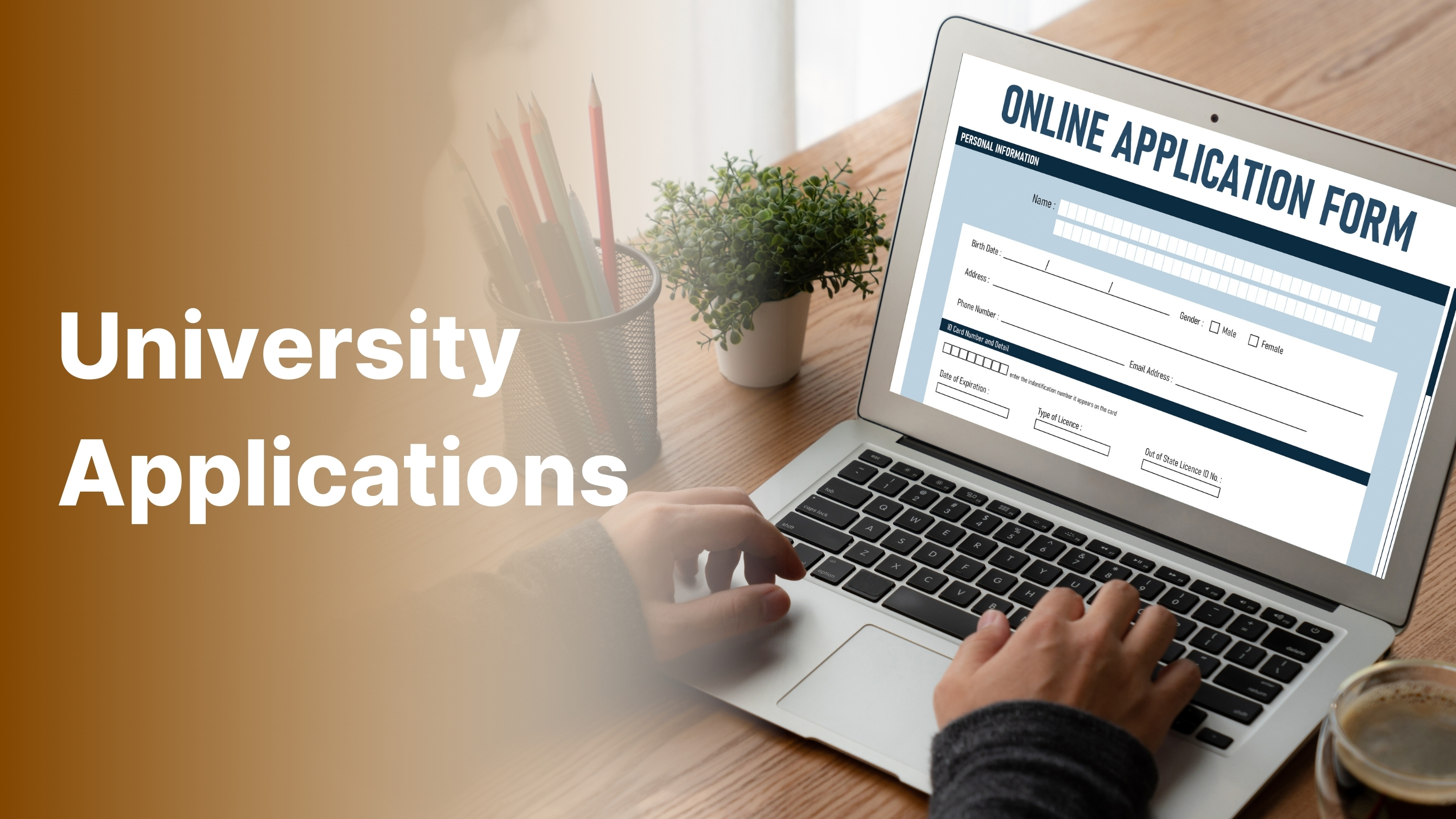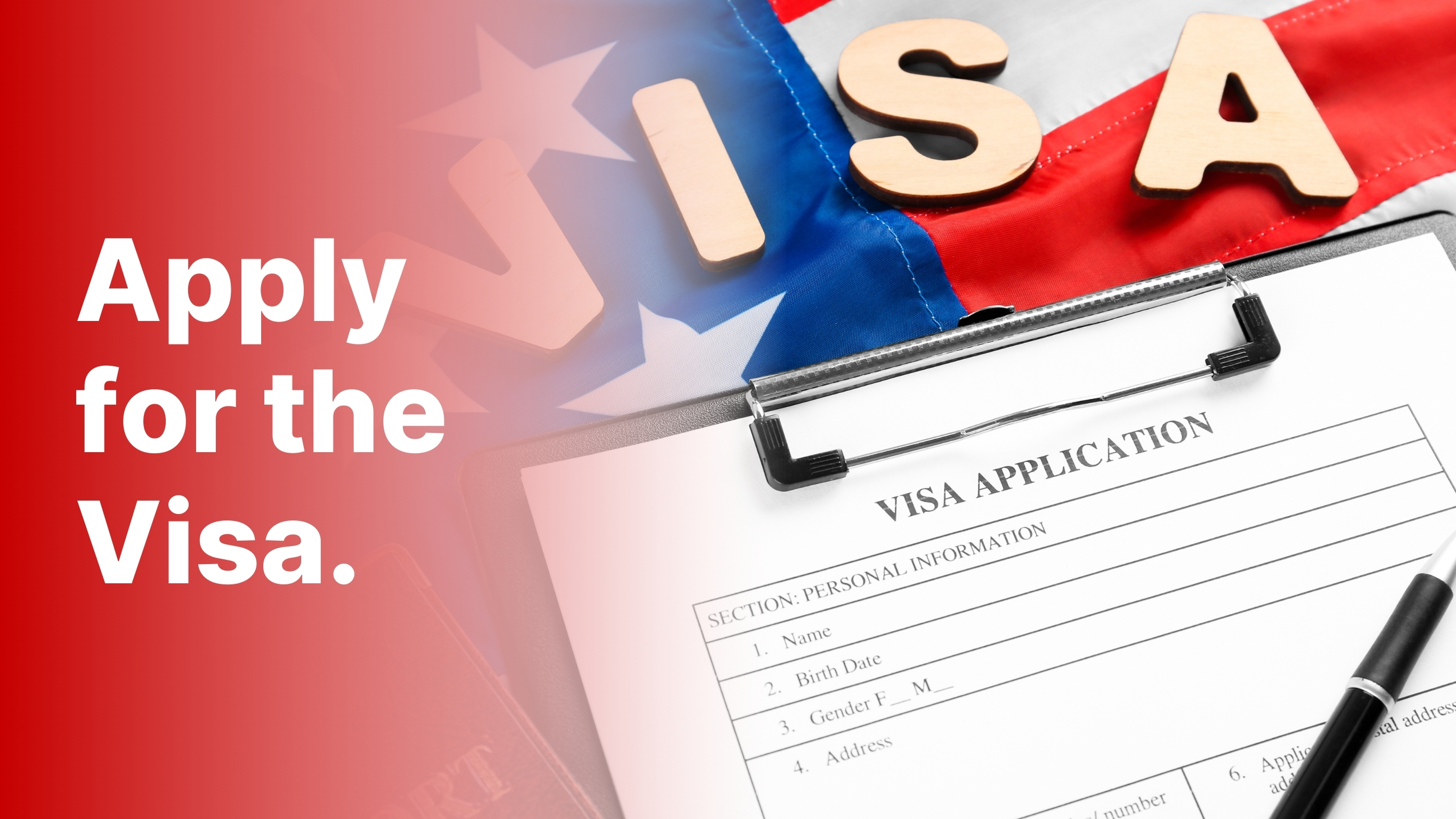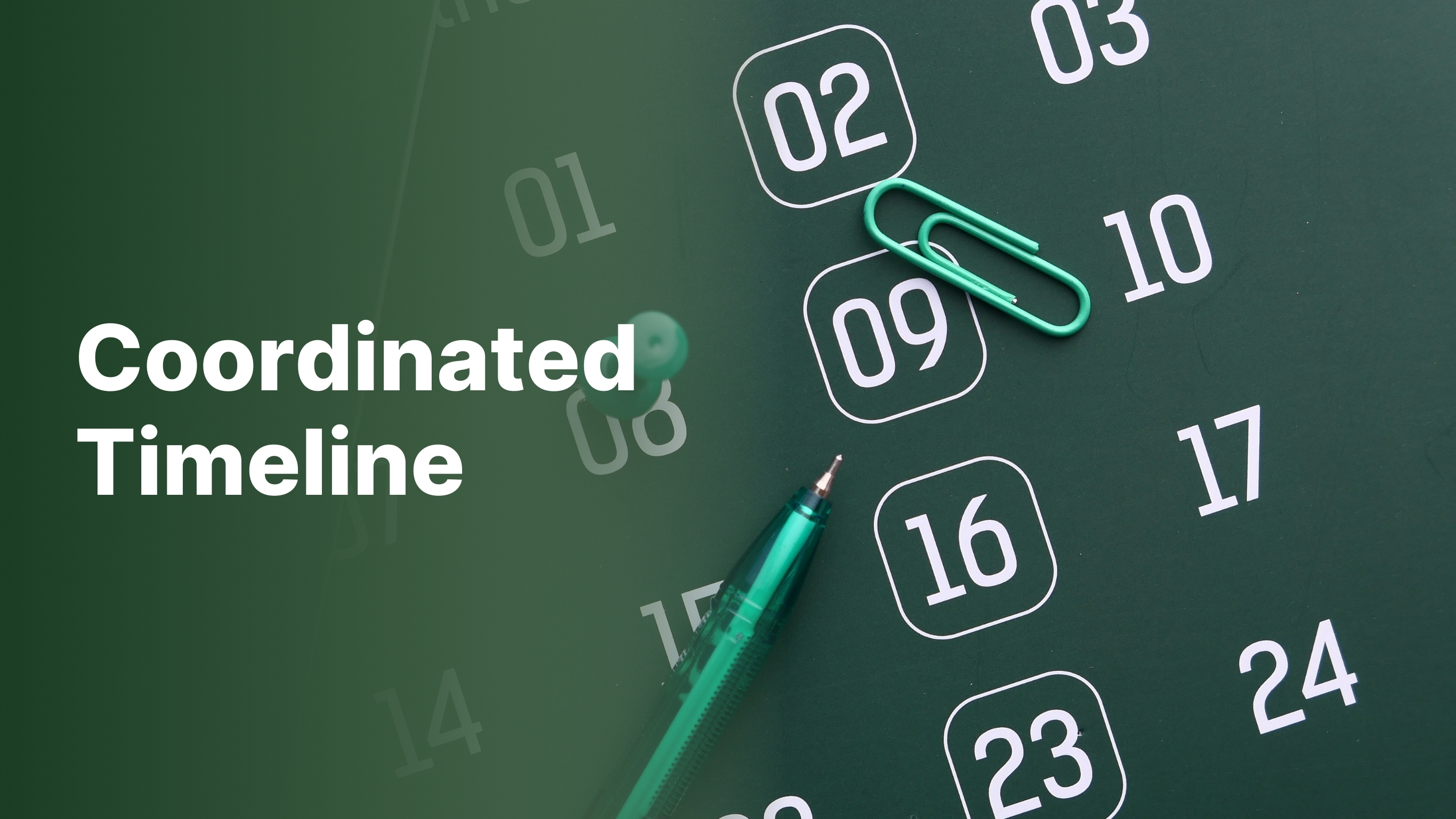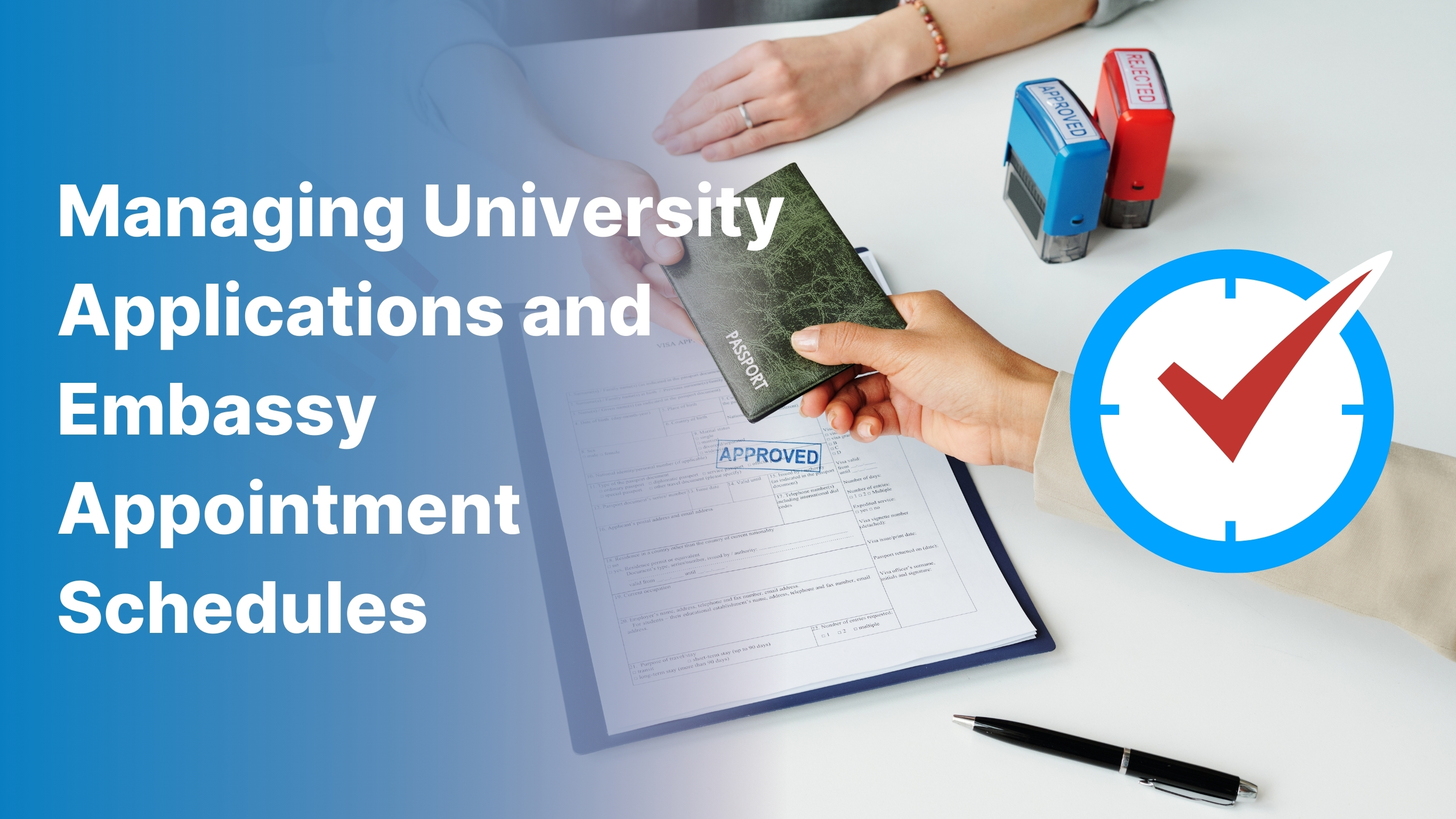Introductions
Studying in the United States is a dream for many international students. With world-renowned universities, cutting-edge research facilities, and a diverse student body, the U.S. is a prime destination for higher education. In fact, as of 2022, the United States hosted over 900,000 international students, a number that continues to rise each year. However, the path to studying in the U.S. is not a straight line—there are multiple steps to navigate, including university applications and visa appointments, both of which come with their own sets of challenges and opportunities.
For international students, the process typically starts with selecting a university, submitting applications, and, if accepted, securing the proper student visa. While these tasks might seem daunting, organizing them strategically can significantly reduce stress and set you up for success. Think of this as your ultimate roadmap—helping you from the moment you consider applying to your dream university, all the way to receiving your student visa and preparing for your academic journey in the U.S.
This guide will walk you through a step-by-step process for managing both your university applications and visa appointments, ensuring a smooth and successful U.S. journey. We’ll not only provide detailed instructions for each stage but also highlight common mistakes students make, so you can avoid them. Here’s what you need to know:
University Applications: Applying to U.S. universities involves more than just filling out a form. There’s the research process, selecting the right schools, preparing your application materials, and adhering to deadlines. In 2021, the average U.S. acceptance rate for international students was around 62%, meaning that while competitive, with the right preparation, acceptance is within reach.
Visa Appointments: Once you’ve been accepted to a U.S. university, securing your student visa is the next step. As of 2023, nearly 75% of F-1 visa applicants were approved, but this doesn’t mean the process is without hurdles. From gathering the necessary documents to acing the visa interview, a strategic approach can increase your chances of success.
Managing Timelines and Deadlines: With multiple deadlines for both your university applications and visa appointments, keeping everything organized is key. A missed deadline or incomplete application could delay your acceptance or visa approval. According to NAFSA, about 40% of international students report feeling stressed or overwhelmed during the application process, which can be alleviated by planning ahead and staying organized.
Avoiding Common Pitfalls: From overlooked paperwork to misunderstanding visa requirements, many students face challenges during the application process. Knowing what to expect—and how to avoid the common pitfalls—can help you stay on track and confident.
In this blog, we’ll dive into each of these steps in detail, offering actionable advice and resources to ensure you have everything covered. We’ll also provide insights on the visa appointment process, highlight important visa requirements, and offer tips on how to manage both applications and interviews effectively. Along the way, we’ll tackle FAQs, share useful hyperlinks (such as official visa application websites and university portals), and break down the process with real-world statistics that help guide your decisions.
By the end of this guide, you’ll be ready to manage your university applications and visa appointments with clarity and confidence, ensuring that your journey to the U.S. is as smooth as possible.
Key Statistics and Facts to Keep in Mind:
- 900,000+ international students in the U.S. as of 2022 (National Center for Education Statistics).
- U.S. universities accept approximately 62% of international applicants (U.S. Department of Education).
- 75% success rate for F-1 visa applicants as of 2023 (U.S. Department of State).
- 40% of international students report feeling overwhelmed by deadlines and paperwork (NAFSA: Association of International Educators).
- Average U.S. student visa processing time: 10-15 business days (U.S. Department of State).

Step 1: University Applications
The journey to studying in the United States starts with applying to universities, and this step is crucial. Whether you are applying to one university or several, your application needs to be well-prepared and tailored to showcase your strengths and interests. The university application process can be complex, with each institution having its own set of requirements, deadlines, and evaluation criteria. However, with the right approach and preparation, you can increase your chances of success.
Research and Choose the Right University
Before filling out any applications, it's essential to research U.S. universities thoroughly. Factors such as your academic interests, location preferences, and budget should guide your decision. The U.S. boasts more than 4,000 accredited institutions of higher education, including world-renowned universities like Harvard, Stanford, and the University of California, Berkeley, as well as many smaller colleges and specialized schools.
Key Considerations for Choosing the Right University:
- Academic Programs: Does the university offer strong programs in your field of study? Are there opportunities for research, internships, and study abroad?
- Location: Do you prefer an urban or rural setting? What about the climate, cost of living, and proximity to potential employers or industries in your field?
- Tuition and Scholarships: Can you afford the tuition fees? Does the university offer scholarships, grants, or financial aid for international students? On average, international students pay between $20,000 to $60,000 per year for tuition, depending on the institution and program.
- Reputation and Accreditation: Is the university accredited by a recognized body? Is it known for its strong international student community?
Once you’ve narrowed down your list of potential universities, be sure to check their official websites for specific admissions requirements, application deadlines, and program details.
Understanding the U.S. Universities Application Process
U.S. university applications typically involve several components that must be submitted by the application deadline. While the process may vary slightly from one school to another, most universities will require the following:
Common Application Components:
- Application Form: Most universities use an online system or common application platforms (like The Common App or Coalition App) to collect basic information. These forms will ask for your personal information, academic history, extracurricular activities, and intended major.
- Standardized Test Scores: Many universities require standardized test scores like the SAT or ACT, though some schools have become test-optional in recent years. Additionally, if English isn’t your first language, you’ll likely need to submit English proficiency test scores like TOEFL or IELTS.
- TOEFL: The average TOEFL score for U.S. universities is between 80-100 (iBT).
- IELTS: The common IELTS score for U.S. universities is between 6.0-7.5.
- Essays and Personal Statements: U.S. universities often require personal essays or statements of purpose to assess your motivations for applying and your fit for the program. Your essay should highlight your strengths, explain why you're passionate about your chosen field, and how you’ll contribute to the campus community.
- Letters of Recommendation: Most universities ask for 2-3 letters of recommendation from teachers, mentors, or employers who can speak to your academic abilities and character.
- Transcripts: You'll need to submit your high school transcripts or equivalent, showing your grades and coursework. Many schools also ask for translated copies if your documents are in another language.
Tip: Stay organized by creating a checklist and timeline for each university’s specific application requirements.
Application Deadlines and Timelines
Meeting application deadlines is critical for your success, so be sure to keep track of all your deadlines and plan well ahead of time. U.S. universities typically have two types of deadlines:
- Regular Decision: This is the most common deadline and typically falls between January 1 and February 1 for the fall semester. Regular decision applicants are notified of admissions decisions in March or April.
- Early Decision/Early Action: These deadlines are usually in November and offer a chance to apply early for a better chance of acceptance. Early decision is binding, meaning if you're accepted, you must attend that university. Early action, however, is non-binding, giving you the option to apply elsewhere.
Real-World Data: According to the National Association for College Admission Counseling (NACAC), 40% of U.S. universities accept the majority of their students through early decision/early action programs, making it a good option for students who are sure about their university choice.
Tips for Crafting a Standout Application
A standout application is one that reflects your strengths and makes you stand out from the competition. Here’s how you can improve your chances of being accepted:
Tailor Your Essays: Customize your personal statements to align with the university’s values and what they’re looking for in students. Avoid generic answers and be authentic.
Focus on Extracurricular Activities: Admissions officers want to see that you’re a well-rounded individual. Highlight your leadership roles, volunteer work, internships, and any accomplishments outside the classroom.
Request Strong Letters of Recommendation: Choose recommenders who know you well and can speak to your strengths, work ethic, and potential. Provide them with a summary of your accomplishments and why you're applying to the university.
Proofread: Mistakes in your application—whether in your essays, resume, or personal information—can hurt your chances of admission. Review your application multiple times, and have a trusted friend or mentor proofread it as well.
Real-World Statistics
- Acceptance Rates: The average acceptance rate for U.S. universities is around 66.1%, but this varies significantly by school. For example, top-tier universities like Harvard University have an acceptance rate of just 4.6%, while universities with less competitive admissions may have acceptance rates of 70-80%.
- International Students in U.S.: As of 2022, there were over 900,000 international students studying in the United States, with India, China, and South Korea being the top three countries of origin.
- Standardized Test Scores: According to the College Board, the average SAT score for admitted students at U.S. universities is around 1050-1100, though competitive programs may require higher scores. Similarly, the average TOEFL score for accepted international students is around 85-100.
Useful Resources and Links:
- The Common Application
- Coalition for College
- TOEFL Official Website
- SAT Official Website
- NACAC Admission Trends Report
By understanding the key steps in the application process and preparing thoroughly, you can ensure that your application stands out and you’re one step closer to studying in the U.S.

Step 2: Apply for the Visa
Once you get your admission offers, the next step is to apply for the visa. For most international students going to the US, this will be the F-1 student visa.
1. Visa Timelines
Visa application can take 30 days to 120 days depending on your country of residence and the time of year. Peak season (May to August) is usually longer.
Here’s how to do it:
- Wait for your I-20 from your university (this confirms your admission).
- Pay the SEVIS fee.
- Complete the DS-160 form online (required for US visa applications).
- Schedule your visa interview as soon as possible.
Tip: Book your visa appointment at least 3–4 months before your program starts.
2. Documents Required for Your Visa Application
Embassy requires you to bring many documents. Missing one can cause delays or denial.
Checklist:
- Valid passport (with at least 6 months validity beyond your stay).
- I-20 from your university.
- SEVIS fee payment receipt.
- DS-160 confirmation page.
- Proof of financial support (bank statements, sponsor letters, or loan documents).
- Academic documents (admission letter, transcripts, test scores).
Pro Tip: Organize your documents in a folder with sections. This looks professional and helps you stay calm during the interview.
3. Visa Interview
The interview is the most daunting part of the process. According to a US Department of State report, applicants who are well-prepared with their documents and answers have a higher approval rate.
Sample Questions:
- “Why did you choose this university?”
- “How will you fund your education?”
- “What are your plans after graduation?”
Tip: Practice with a friend or mentor. Be honest, brief and confident.

Step 3: Coordinated Timeline
One of the most important aspects of managing your journey to studying in the United States is creating a coordinated timeline that aligns your university application process, visa application, and all the other steps involved. Staying organized and on top of deadlines will reduce stress, ensure that you don’t miss any critical steps, and keep your journey on track.
Planning a coordinated timeline requires attention to detail, awareness of key dates, and the ability to juggle multiple tasks at once. Here’s how you can break down the timeline into manageable stages:
Start Early: The Foundation for a Smooth Journey
The first and most important piece of advice is to start early. The earlier you begin, the more time you have to complete your tasks without rushing and to ensure everything is done thoroughly. Ideally, you should begin preparing for your U.S. university applications at least 12 months before your intended start date.
Key Steps to Start Early:
- Research Universities: Start researching universities at least 12-18 months before you plan to start your studies. Create a list of schools that offer programs in your field of interest, keeping in mind factors like location, reputation, financial aid, and deadlines.
- Standardized Tests: Register for and take any required standardized tests (like TOEFL, IELTS, or SAT). Preparing for these tests early gives you ample time to retake them if needed to achieve your desired scores.
- Prepare Financial Documents: You’ll need to show proof of financial resources for your visa application, so start organizing your financial documents early on. Some universities may also require proof of funds for admission.
Real-World Data: According to the Institute of International Education (IIE), 93% of international students apply to at least 3-5 universities before selecting their final choice. Starting early gives you the flexibility to apply to multiple schools without feeling rushed.
Breaking Down the Application Process: Month-by-Month Breakdown
Once you’ve chosen your universities and reviewed their requirements, you can create a detailed, month-by-month timeline. Below is a general breakdown of how to manage your time during the application and visa process:
| Month | Task | Details |
|---|---|---|
| 12-18 Months Before Start Date | Research Universities | Identify and shortlist universities based on your academic interests and location preferences. |
| 12-14 Months Before Start Date | Register for Standardized Tests | Sign up for TOEFL, IELTS, or SAT and begin preparation. |
| 10-12 Months Before Start Date | Begin University Applications | Start gathering required documents, such as transcripts, letters of recommendation, and personal statements. |
| 8-10 Months Before Start Date | Submit Applications | Finalize your applications, submit essays, and request recommendations. Pay attention to deadlines. |
| 6-8 Months Before Start Date | Wait for Admissions Decisions | Monitor application portals for decision updates. |
| 5-6 Months Before Start Date | Apply for Scholarships | If applicable, apply for scholarships, financial aid, or student loans. |
| 3-4 Months Before Start Date | Apply for Visa | Begin the visa application process (DS-160 form, pay SEVIS fee, schedule an appointment). |
| 2-3 Months Before Start Date | Prepare for Visa Interview | Gather required documents like I-20, financial documents, and passport. Practice for the visa interview. |
| 1-2 Months Before Start Date | Finalize Housing and Travel Plans | Secure housing arrangements, book flight tickets, and arrange health insurance. |
| 1 Month Before Start Date | Orientation and Final Preparations | Attend university orientation, finalize travel documents, and ensure you are ready for the academic year. |
Synchronizing University and Visa Application Deadlines
While applying to universities and preparing for your visa appointment are separate tasks, they need to be synchronized to avoid delays or missed deadlines. The university application process is often lengthy, with applications due several months before your planned arrival date. Simultaneously, the U.S. visa application process also takes time, especially if you need to gather supporting documents or schedule a visa interview.
Important Timelines to Sync:
- University Application Deadlines: Many universities have fall semester deadlines between November and January for early decision and regular decision applications. Spring semester deadlines typically fall in October.
- Visa Application Timeline: After receiving your I-20 Form from the university, you can apply for your visa. U.S. embassies may require several weeks to schedule interviews, especially during peak seasons (like summer or holiday breaks), so it's essential to apply early.
- The U.S. Department of State advises applying for a visa at least 3 months before your intended arrival date to account for any delays.
Prepare for Challenges and Setbacks
While having a coordinated timeline is crucial, be prepared for unexpected delays and challenges. For instance:
- University Application Delays: Sometimes universities may take longer than expected to review applications and send out decisions, particularly for competitive programs.
- Visa Processing Delays: U.S. visa appointments may be harder to schedule during peak seasons (for example, summer months) due to high demand.
- Financial Documentation: If your financial situation changes or if you encounter delays in securing scholarships, it could slow down your ability to submit a complete visa application.
Real-World Statistics: According to the U.S. Department of State, visa processing times can range from 3 to 6 weeks depending on the location and time of year, so it’s critical to apply well in advance.
Tools and Resources for Staying Organized
The key to managing this timeline effectively is staying organized. Consider using tools and resources to help you keep track of deadlines and milestones:
- Google Calendar: Create a shared calendar to track university deadlines, visa appointments, and other important dates.
- Trello or Asana: Use project management tools to break down your tasks, set deadlines, and track your progress.
- University and Visa Application Websites: Regularly visit official websites for updates on deadlines, application statuses, and processing times. You can use these resources to stay informed:
Final Words on Creating a Coordinated Timeline
A coordinated timeline is your best ally in ensuring that the complex process of university applications and visa appointments runs smoothly. Starting early, staying organized, and synchronizing your key deadlines will help you avoid unnecessary stress and ensure that you meet all the requirements for your U.S. study journey.

Common Issues (and How to Fix Them)
1. Embassy Appointments Are Full
This happens during peak seasons. If you can’t find an appointment:
- Check embassy websites daily for cancellations or new slots.
- Talk to your university for help—they may be able to assist or guide you.
2. Document Preparation Takes Longer Than Expected
Students underestimate how long it takes to get official documents. Start early and add extra time for unexpected delays like getting transcripts from schools.
3. Visa Interview Questions
Unprepared for the interview? Focus on the essentials:
- Why are you studying abroad?
- How will you finance yourself?
- What are your plans?
Tip: Be genuine and sound confident. They don’t want perfect answers, just honest ones.

FAQs: Your Questions Answered
When should I start applying for universities?
Answer: 12-15 months before your intake. This gives you time to research universities, gather documents and handle any unexpected delays without last minute stress.
University applications or embassy appointments first?
Answer: University applications first. Your visa process including embassy appointments depends on you getting an admission offer and I-20 from your chosen university. Without these you can’t move to the visa stage.
How do I choose the right university?
Answer: Here are three things to consider:
- Academic fit: Does the university offer your program?
- Budget: Can you afford the tuition and living expenses or are there scholarships available?
- Location: Are you comfortable with the city, climate and cultural environment?
Pro Tip: Use QS Rankings or Times Higher Education to compare universities based on academic reputation and student outcomes.
What if I miss a university deadline?
Answer: Missing a deadline can limit your options but don’t lose hope. Some universities have rolling admissions meaning they accept applications until all spots are filled. Contact the admissions office to see if late submissions are possible.
How can I avoid visa delay?
Answer: Follow these:
- Start the visa process as soon as you get your I-20.
- Review all your documents before submitting.
- Book your embassy appointment early especially during peak season (May-August).
What if there are no embassy appointment slots?
Answer: Embassy appointment slots can be tough during peak seasons. Here’s what you can do:
- Check the embassy’s website for cancellations.
- Reach out to your university—they may be able to provide advice or support letters to speed up the process.
- Look for appointments at consulates in nearby cities or regions.
What if my visa is denied? Can I reapply?
Answer: Yes, you can reapply if your visa is denied. Before doing so:
- Find out why you were denied (it’s usually stated in the rejection letter).
- Fix the issue—whether it’s lack of financial proof, unclear goals or incomplete documents.
- Reapply with the corrected info.
Pro Tip: Many students get approved on their second try if they address the concerns raised in the first interview.
Is it okay to feel overwhelmed?
Answer: Yes! Managing applications and embassy appointments is a big task and it’s normal to feel stressed. Break it down into smaller tasks, set realistic deadlines and don’t be afraid to ask for help from mentors, family or friends.
Can I do all of this without professional consultants?
Answer: Yes, many students manage their applications and visa process on their own. Here’s how:
- Use university websites and official embassy resources for information.
- Join student forums or online communities for advice from peers.
- Stay organized with tools like spreadsheets or project management apps.
But if you’re unsure, hiring a consultant can help.
What if my visa interview doesn’t go well?
Answer: Don’t worry. If your interview didn’t go as planned, think about what went wrong. Common mistakes are:
- Unclear study plans.
- Insufficient financial proof.
- Nervousness or poor communication.
You can always reapply and do better next time. Practice your answers, make sure your documents are complete and present yourself confidently.
What do students often forget during this process?
Answer: Many students underestimate the importance of having backup plans. Whether it’s applying to multiple universities or booking alternative embassy appointment dates, having options can save you a lot of headaches.
How do I manage my time for applications and appointments?
Answer: Create a timeline with milestones. For example:
- Month 1-3: Research universities and gather documents.
- Month 4-6: Submit applications and wait for offers.
- Month 7-8: Start visa process.
- Month 9-10: Book flights and accommodation.
Use calendars or apps like Google Calendar to keep track of deadlines and set notifications.
